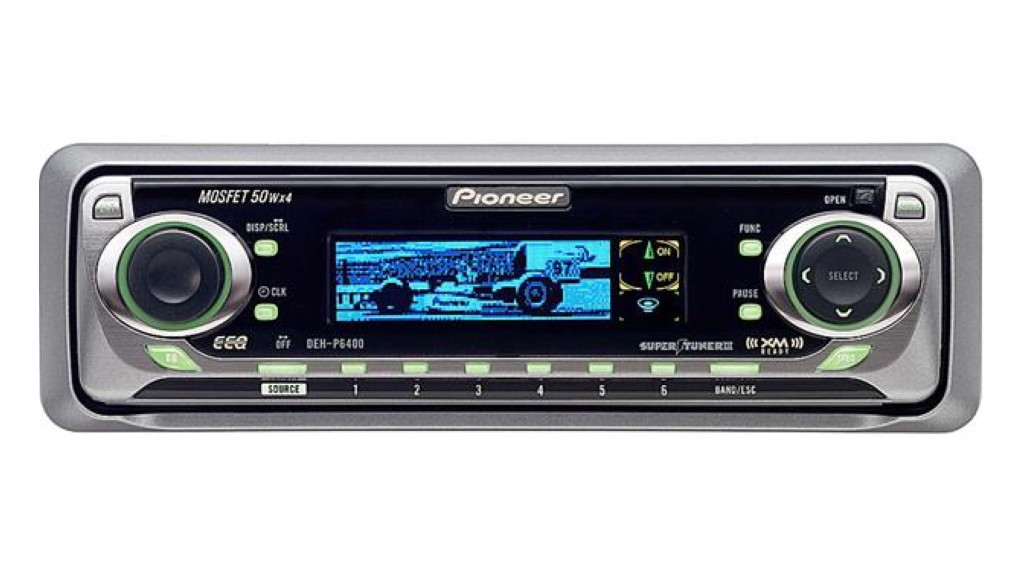In the early 2000s, car audio head units were undergoing a design revolution. Ditching subtlety, many aftermarket brands embraced a futuristic, maximalist aesthetic characterized by shiny plastic and an array of blinking lights. As consumer electronics design leaned into sleekness, brands like Kenwood and Alpine competed to pack the most information onto their LCD displays. Pioneer, however, charted a different course, pioneering the use of organic electroluminescence (EL) displays in their head units. Their initial marketing boldly claimed these displays were 1,000 times faster than LCDs, and Pioneer needed a captivating way to showcase this cutting-edge technology.
This era was all about pushing technological boundaries in entertainment. Just as Windows boasted its mesmerizing pipes screensaver and WinAmp offered endless customizable skins, Pioneer’s Organic EL displays brought their own visual flair to car dashboards. While early models experimented with various animations, the Pioneer Organic EL display truly hit its stride in head units like the DEH-P6400, released in 2002.
The DEH-P6400 became famous for an unexpected reason: a charming animation of a person swimming with dolphins. While seeing dolphins while driving might usually suggest an impending insurance claim, Pioneer cleverly integrated this whimsical visual into the DEH-P6400. This seemingly unusual feature became a significant flex. Despite a screen resolution comparable to a Nokia 3210, having the “Pioneer Radio With Dolphins” in your dash, coupled with powerful subwoofers, was a definitive statement of style and status.
ADVERTISEMENT
Beyond the famous dolphin animation, the Pioneer DEH-P6400 offered a variety of visual entertainment. Alongside grainy level meters and mesmerizing pipe-style animations, Pioneer incorporated race car animations. This was a nod to Pioneer’s sponsorship of Indycar drivers, including Alex Zanardi. The animation featured moving engine cutaways, first-person perspectives, and a detailed racetrack setting, a significant upgrade from the more basic Indycar animation in the preceding DEH-P6300 model.
 Pioneer Deh P6400 With Dolphins Showing IndycarPhoto credit: Pioneer
Pioneer Deh P6400 With Dolphins Showing IndycarPhoto credit: Pioneer
Functionality-wise, the DEH-P6400 was a well-equipped head unit for its time. It included provisions for a 3.5mm auxiliary input and was XM satellite radio ready. With an RMS power output of 22 watts, as noted by Crutchfield, and a reasonable 50 Hz RMS bandwidth, it provided solid audio performance. For those seeking more powerful sound, four pre-amp output jacks allowed for expansion with more elaborate audio systems. CD changer control was also included, essential for seamless transitions between artists like Limp Bizkit and Ja Rule while driving.
Pioneer also offered multi-color Organic EL displays on higher-end units like the MEH-P9000 and DEH-P9000, capable of displaying blue, green, yellow, and orange. However, these premium models never achieved the widespread popularity of the DEH-P6400. Today, the DEH-P6400, with its iconic “pioneer radio with dolphins,” is remembered fondly, much like Dunkaroos and Midnight Club 3: Dub Edition. While its silver faceplate and low-resolution display clearly place it in the early 2000s, it stands out as the perfect era-correct head unit to complete a 2000s-style build in vehicles like a Toyota Matrix XRS or Nissan Sentra SE-R. As 2000s car culture continues to gain appreciation, the Pioneer dolphins are poised to become a sought-after symbol of that era once again.
Lead photo credit: Pioneer/Boosted 2000
